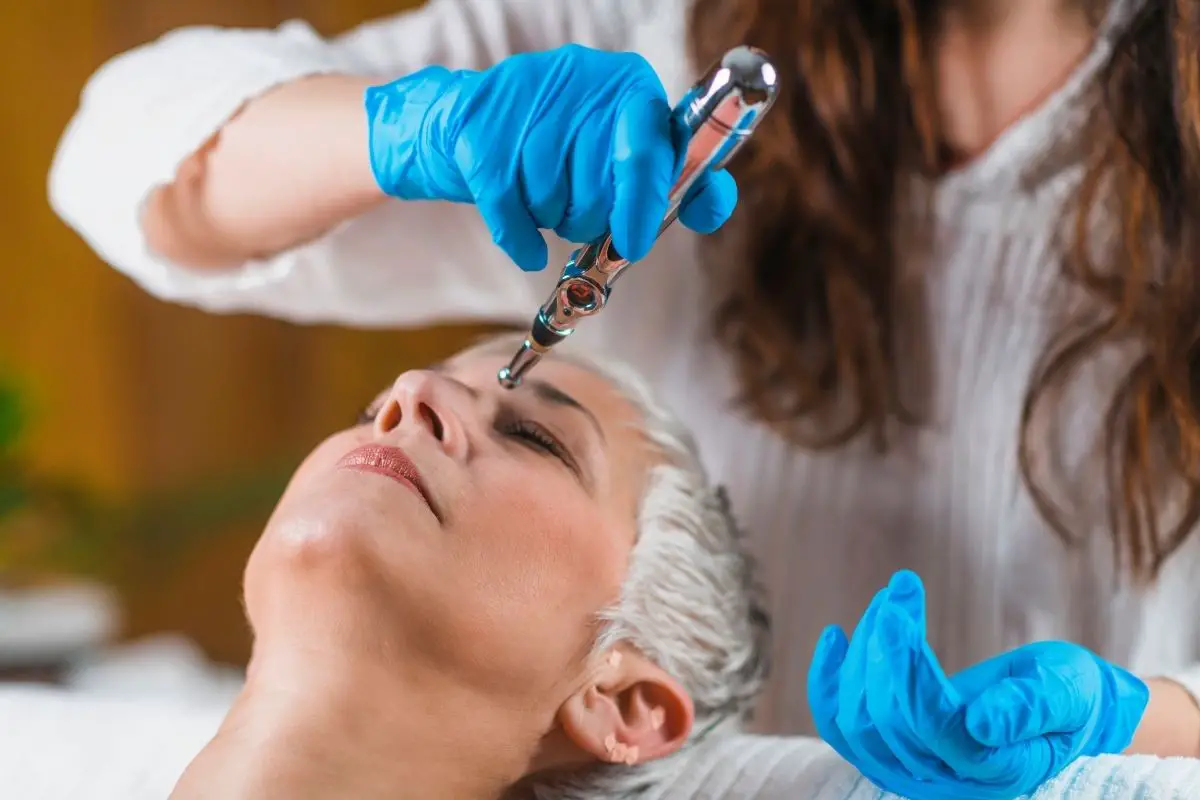After purchasing my acupuncture pen, I was surprised to find out that it significantly relieved symptoms of the common cold and flu. Now, I don’t leave the house without it – especially in the winter! Learn how to use an acupuncture pen for sinus drainage using this guide.
I cover everything you need to know, from specific acupuncture points to the benefits of using an acupuncture pen and everything in between.
If you’re not already convinced of the wonderful benefits of acupuncture pens, you will be after reading this article!
Where Are My Sinuses Located?
Sinuses are cavities located in the bones around the eyes and nose, and they are responsible for producing mucus. This mucus drains through the nose and down the back of the throat, which helps clear out germs, dust, and allergens to reduce the risk of illness or infection.
There are four places around the eyes where the sinuses are located, and knowing these will aid in any self-treatment techniques.
- The ethmoidal sinuses are located between your eyes
- The maxillary sinuses are located below your eyes
- The sphenoidal sinuses are located behind your eyes
- The frontal sinuses are located above your eyes
When your sinuses are blocked, it is likely that the nasal passages feel congested. You may also experience sinus headaches, sinus pain, a runny nose, nasal dryness, or watery mucous.
This may occur as a consequence of a range of medical problems. Sinus problems could be a sign of a bacterial infection, a viral sinus infection, acute sinusitis, an allergic reaction, nasal polyps, or chronic sinusitis, just to name a few!
As such, it is always important to visit your doctor if you’re experiencing sinus issues, as it may be due to a serious problem. However, if it isn’t, Traditional Chinese Medicine has many tools that will help alleviate your pain and distress.
Take a look below to find out more.
Can Acupuncture Help Clear Sinuses?

Sinus infections usually involve inflammation of the mucous membranes of the sinuses, which causes swelling, pain, and discomfort. Acupuncture and acupressure are often used to treat chronic sinus conditions, including pressure, being bunged up, and headaches.
This 2011 study concluded that acupuncture could aid significantly in relieving the symptoms associated with allergic rhinitis and rhinosinusitis. This 2020 study concluded that, when combined with Western medical techniques, acupuncture is a promising treatment for sinus conditions.
If you need a bit more convincing, check out this article titled Do Acupuncture Pens Work?. You will be an acupuncture enthusiast in no time at all!
How to Use an Acupuncture Pen for Sinus Drainage
Now that you’re convinced of the efficacy of using acupuncture for treating common cold-like symptoms, you’re likely desperate to find out how to use an acupuncture pen for sinus drainage.
Well, you’re in the right place! Below, we’ve detailed exactly how to use an acupuncture pen for sinus drainage. Just follow the step-by-step guide, and you’ll feel amazing in no time!
Identify Acupuncture Points
First, it is necessary to identify the acupoints that you will need to focus on, given the benefits you would like to experience. This requires a little bit of research. However, we’ve listed some common acupuncture points for sinus drainage below to get you started.
Acupoint: LI-20 (Other Names: Large Intestine-20/Ying Xiang/Welcome Fragrance)
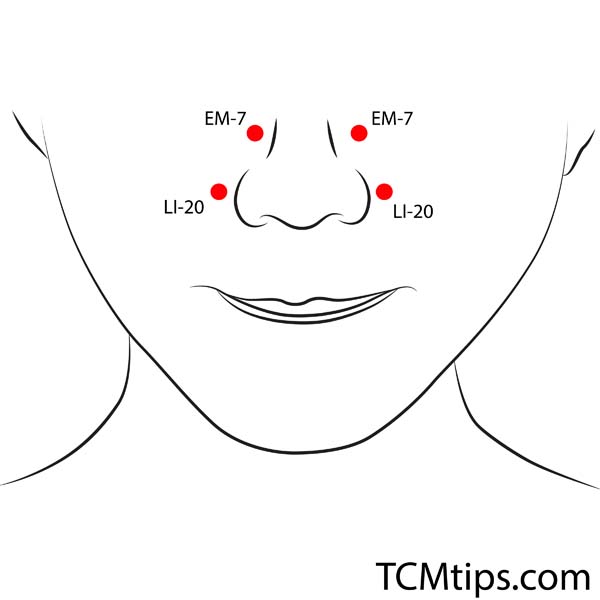
LI20 refers to the ‘large intestine 20’ pressure points, which are located at the base of the nose on both sides of the face. Applying pressure here greatly relieves sinus pressure and reduces headaches.
This acupoint actually has a number of different benefits – including cosmetic ones! To learn more about it, take a look at this article about acupressure points for skin tightening. You’ll soon have clear sinuses and amazing skin!
Acupoint: EM-2 (Other Names: Yin Tang/Hall of Impression)
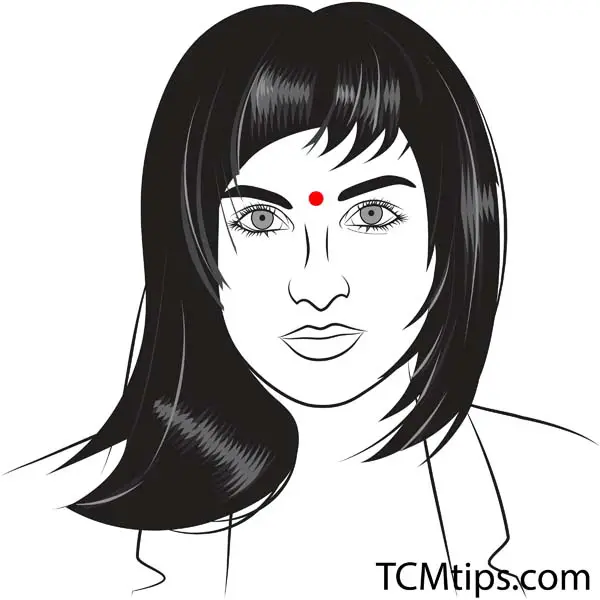
This point (ying tang) is often referred to as the third eye point since it is located between the eyebrows. Applying pressure here can help unblock a bunged up nose and significantly improve sinus drainage.
This acupressure point is one of many acupressure points that work wonderfully for concerns regarding the eye area. Check out this article about acupressure points for eyes if you struggle with this area.
Acupoint: Bl-1 (Other Names: Urinary Bladder-1/Jing Ming/Bright Eyes)
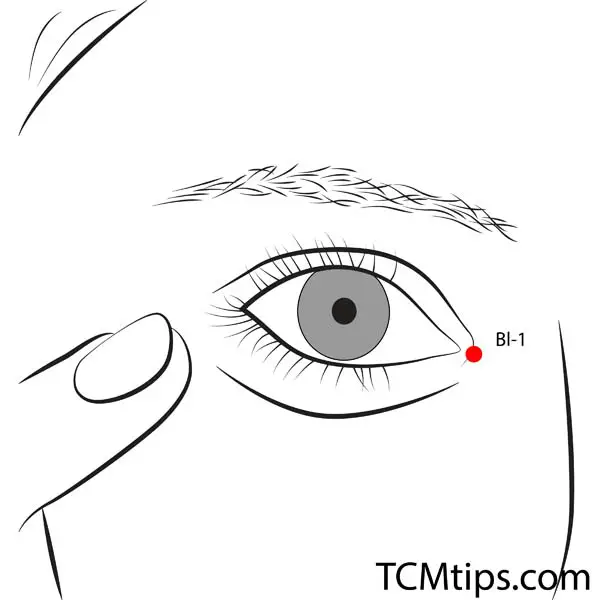
This acupressure point (jingming) is located very close to the upper-inner side of the eye. It is a very useful point when it comes to sinus drainage because it hits the inner corner of the eye and the base of the nose.
This is also an excellent acupressure point if you’re struggling with eye strain, especially when used in conjunction with the Feng Chi point. To learn more about this combination, take a look at this article about the Feng Shi point here.
Acupoint: LI-4 (Other Names: Large Intestine-4/He Gu/Joining Valley)
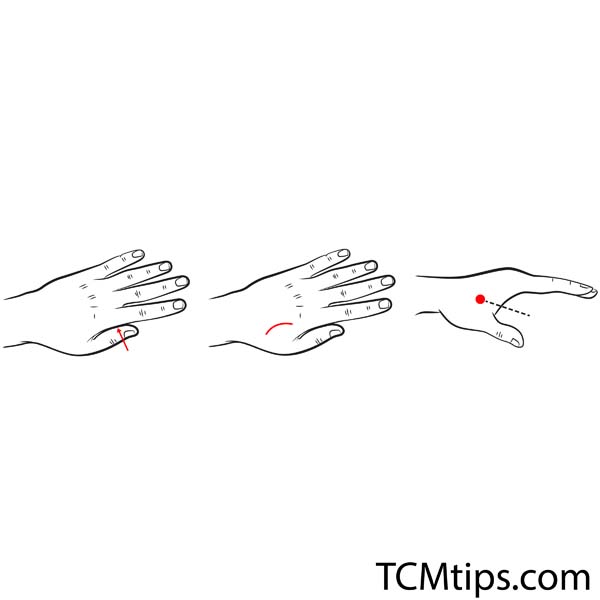
This acupressure point (He Gu) is located on the dorsum of the hand. It is considered to be very good at clearing allergy symptoms such as a stuffy nose or red eyes. It is also known to strengthen immunity.
This acupressure point is often used in conjunction with others to relieve the pain associated with headaches. For instance, it is often used in conjunction with the Heavenly Pillar acupressure point.
Prepare The Area And Skin
Even though hygiene isn’t as much of a concern when using an acupuncture pen because there are no needles, sterilizing the pen and the area is still necessary. Make sure that the device, your skin, and the place you plan to complete the treatment is as clean as possible.
You will need to use precise movements when using an acupuncture pen on the face. As such, make sure that the area you plan to use is very calm. It will also be very useful if you have a mirror to hand.
Finally, many acupuncture pens require that you use a conductive gel or cream on the skin before using it. This ensures that the pen works to the best of its ability. It also ensures that the skin is soothed throughout the treatment.
Use The Acupuncture Pen
Finally, you can use the acupuncture pen. Make sure that you do this according to the manufacturer’s instructions because different acupuncture pens may operate in different ways.
When applying pressure with the pen, you can do this for a few seconds on each spot. You will be sensitive to any changes in or around your sinuses, so it will be easy to tell if it worked. However, it may take a few sessions to notice any difference.
If you need some more guidance, check out this article on how to use an acupuncture pen.
Other Benefits Of Acupuncture Pens
In addition to alleviating sinus problems, acupuncture pens are useful for a huge range of conditions. From aging skin to using acupuncture pen for spinal stenosis, acupuncture pens really can do it all!

Try our Anti-Aging Gua Sha Tool designed to bring out your skin’s natural glow.
Best Gua Sha Product- Anti-Aging: The tool is designed to target 11 specific aging signs such as wrinkles and sagging skin. By following the 7-step routine, users can improve skin firmness and reduce fine lines naturally.
- Enhances Skincare Routine: It works effectively with serums and lotions, boosting absorption and efficacy of skincare products.
- Visible Skin Improvement: Users can expect a smoother complexion, reduced puffiness, and a more youthful appearance.
 P. Sze
P. Sze 